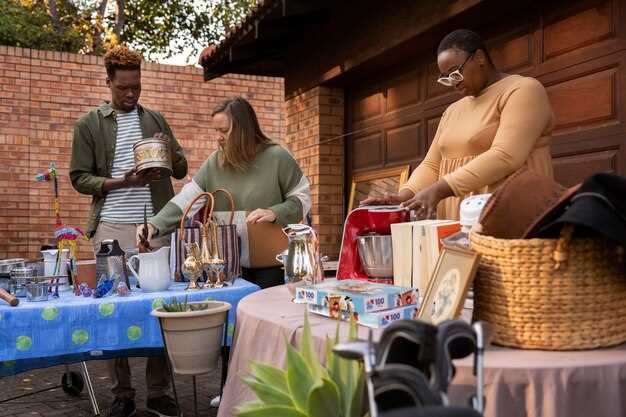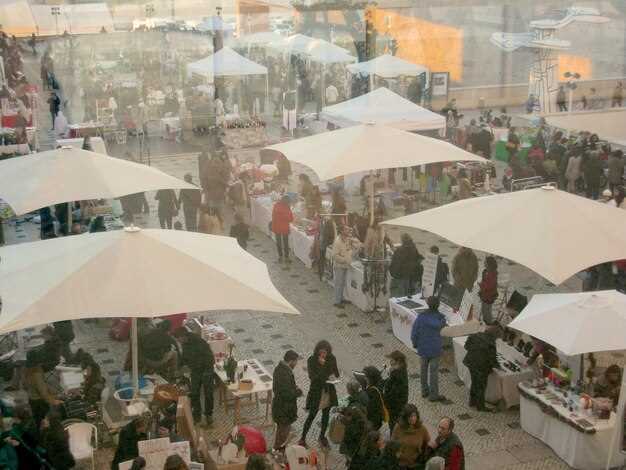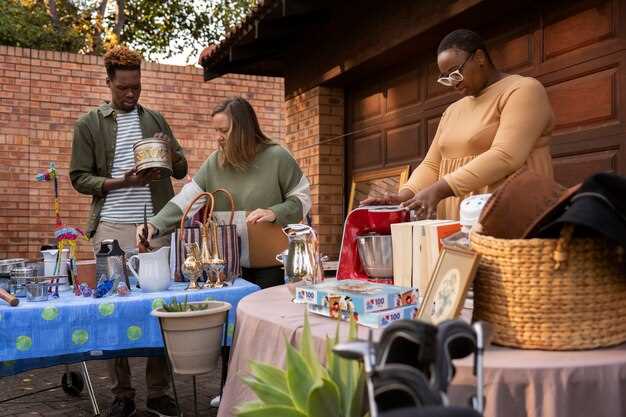Leverage the power of local partnerships by collaborating with nearby businesses. Create joint promotions that benefit both parties and encourage mutual customer traffic. For example, partner with a local bakery to offer a special brunch deal that includes treats from both establishments. This not only strengthens community ties but also introduces your restaurant to new audiences who trust other local brands.
Optimize your menu with seasonal offerings that highlight fresh, local ingredients. Craft limited-time dishes that celebrate the flavors of the season. This strategy draws in curious food enthusiasts eager to try exclusive options while enhancing your restaurant’s reputation for quality and creativity. Guests are also more likely to return for other seasonal specialties throughout the year.
Host community events to become a staple gathering place. Organize cooking classes, trivia nights, or local artist showcases to foster a sense of belonging and make your venue a go-to spot for weekly entertainment. This creates memorable experiences that can turn occasional visitors into loyal patrons and advocates for your brand.
Harness the reach of social media influencers to expand your restaurant’s profile. Identify local food bloggers and influencers who value authentic dining experiences and collaborate with them to share your story. Sponsor a tasting event or send sample platters that showcase your signature dishes. Their engaging content and large following can heighten awareness and draw attention to your unique offerings.
Leveraging Local Community Engagement

Establish a regular calendar of events that involve the local community and spotlight your restaurant. Hosting monthly themed nights featuring local produce or dishes named after local landmarks can create buzz and drive repeat visits. Collaborate with nearby artisans and vendors for pop-up shops or tasting events, offering your establishment as a hub for local talent. This approach not only benefits you but also strengthens community ties.
Running workshops or cooking classes focused on local culinary traditions can position your restaurant as a community learning center. Use these events as opportunities to educate participants about sourcing local ingredients and their impact on the local economy. This strategy fosters a sense of connection and loyalty among patrons who value local initiatives.
Incorporate a loyalty program specifically designed for your neighborhood patrons. Offer discounts or freebies for guests who bring in a friend or participate in community events. Such initiatives not only incentivize dining but also encourage word-of-mouth marketing.
| Local Initiative | Potential Impact |
|---|---|
| Collaborative Events | Increases visibility and community involvement |
| Cooking Workshops | Educates customers and fosters loyalty |
| Neighborhood Loyalty Program | Enhances customer retention and referral rates |
Consider partnering with local schools or nonprofits to host fundraising events or charity drives at your restaurant. Donating a portion of proceeds during these events can endear your business to the community, while concurrently aiding local causes. Personalizing your marketing efforts to incorporate local narratives can transform your restaurant into a cherished neighborhood centerpiece.
How to Partner with Local Suppliers for Cross-Promotion
- Identify Shared Goals: Align your objectives with potential local suppliers who have complementary goals. For example, a baker might want to increase their exposure by providing your restaurant with fresh bread.
- Co-Branding Opportunities: Create unique menu items featuring ingredients from the supplier. This could be a special dish named after the supplier, highlighting their product while adding unique offerings to your menu.
- Joint Marketing Campaigns: Collaborate on social media campaigns, where both parties share posts highlighting the partnership, tagging each other, and using a consistent hashtag to boost visibility within each other’s audiences.
- Loyalty Programs: Offer discounts or promotions when customers support both businesses. For instance, a discount at your restaurant with a receipt from the local supplier, and vice versa, can encourage cross-visitation.
- Exclusive Events: Host events at your restaurant featuring a supplier’s products. Wine and cheese tasting nights or special brunches can provide mutual exposure and create unique customer experiences.
- Feedback Loop: Regularly gather customer feedback on the items or offerings from the supplier. Share this feedback with the supplier to improve product offerings and strengthen the partnership.
- Consistent Communication: Keep open lines of communication to explore new ideas and ensure that both parties continue to benefit. Regular meetings or check-ins can foster a productive partnership.
Fostering strategic collaborations with local suppliers enhances brand visibility and customer engagement while supporting local businesses.
Utilizing Community Events to Boost Restaurant Visibility
Participate actively in local festivals and fairs by setting up a booth or food truck. Offer samples that highlight your unique dishes and engage with attendees through interactive cooking demonstrations. These events provide an excellent venue for face-to-face interactions with potential customers. Consider collaborating with other local businesses to organize joint events, such as a neighborhood block party, which can increase attendance and distribute costs.
Leverage charity events by sponsoring meals or hosting fundraisers in your restaurant. This not only supports a good cause but also attracts publicity and goodwill from the community. Advertise these events through social media and local press to amplify your reach and draw in people who are passionate about the cause, leading to potential new patrons.
Organize themed nights that align with local cultural events or sport matches, creating a lively and attractive atmosphere. Provide discounts for participants who attend these events, along with special themed menus to entice more patrons. Use localized hashtags on social media to make these events visible to a wider audience.
Build relationships by attending local business expos and networking events. Distribute flyers or business cards with special offers to incentize people to visit your restaurant. These connections can lead to partnerships and collaborations that expand your customer base.
Measure the impact of these activities by tracking foot traffic and sales increase during event days. Use a simple table to evaluate the success of each event and refine your strategies.
| Event | Attendance Increase (%) | Sales Increase (%) |
|---|---|---|
| Local Festival | 25% | 30% |
| Charity Fundraiser | 40% | 45% |
| Themed Night | 15% | 20% |
Creating a Loyalty Program with a Local Twist
Integrate local culture into your loyalty program by partnering with nearby businesses and local artisans. Offer customers points not only for purchases but also for engaging with local events or sharing their experiences on social media. This not only strengthens community ties but also increases visibility within your locale.
Enhance the appeal of your program by rewarding customers with exclusive access to events, such as cooking classes featuring local ingredients or tastings of regional specialties. These unique experiences encourage repeat visits and solidify your restaurant as a community hub.
To build anticipation, introduce a tiered system where frequent customers unlock benefits like personalized menu suggestions rooted in local flavors. Collaborate with local craftspeople to create limited-edition merchandise as rewards for long-term loyalty, emphasizing a shared commitment to supporting local talent.
Use digital tools to streamline the loyalty program, such as a smartphone app that tracks rewards and offers surprises personalized to customer preferences. By leveraging technology, you create a seamless experience that resonates with patrons and entices new ones to join.
Utilizing a feedback loop, continually adapt your offerings based on customer suggestions, ensuring the program remains vibrant and responsive to community interests. This continuous improvement ensures that your loyalty program remains relevant and cherished by patrons.
Building Relationships with Nearby Businesses
Create a win-win partnership with neighboring businesses by offering mutual discounts. Collaborate on special promotions where their customers get a discount at your restaurant and vice versa. This not only increases foot traffic for both parties but also broadens customer reach.
Organize joint events that can draw in diverse crowds. A weekend market or a community festival involving local shops can magnify exposure. Coordinate with nearby businesses to pool resources for advertising and logistics, making the event a collective success.
Engage in cross-promotional efforts through social media. Feature each other’s services in online promotions, incorporating shared hashtags and stories. This digital collaboration dramatically boosts visibility and taps into different customer bases.
Support fellow businesses with catering services for their events. Offering exclusive menu items at select occasions can enhance your brand’s visibility. Maintain open communication to understand their needs and preferences, ensuring a seamless partnership.
Use co-branded loyalty programs to reward cross-business shop-and-eat experiences. Encourage customers to visit these neighboring establishments with a shared points system that benefits everyone involved. This fosters a sense of community and encourages repeat visits.
Ensure regular participation in local business forums or associations. These platforms provide insight into community trends and offer opportunities to create robust networks that build trust and open doors for future partnerships.
Innovative Online Marketing Strategies

Leverage interactive social media features like Instagram polls and story quizzes to engage your audience actively. Encourage followers to participate by voting on new dish ideas or upcoming event themes, making them feel part of the decision-making process. This not only boosts engagement but also provides insight into customer preferences.
Implement a loyalty program through a dedicated app, offering exclusive online rewards for frequent visits. Integrate a gamified experience where customers earn points for each purchase, unlocking exclusive discounts or early access to special menus. This digital approach helps maintain customer interest and encourages repeat visits.
Create a vibrant online community by hosting virtual cooking classes or kitchen tours live-streamed through platforms like Facebook or YouTube. Invite customers to experience the behind-the-scenes magic, enhancing transparency and personal connection to your brand.
Optimize your online ordering system with user-friendly interfaces and clear navigation. Incorporate personalized recommendations based on past orders, ensuring a seamless and satisfying customer experience. Timely follow-up emails with suggestions for complementary dishes can further enhance satisfaction and encourage additional orders.
Collaborate with local influencers or food bloggers for online campaigns. These partnerships can highlight unique restaurant features to a broader audience, driving new customer traffic. Offer exclusive deals in collaboration tweets or Instagram posts to create buzz and attract their followers to try your restaurant.
Utilize retargeting ads to keep your restaurant top-of-mind for previous website visitors. Implement strategic ad placements across various platforms targeting those who showed interest but didn’t complete an order. Personalized offers and tailored messages in these ads can motivate users to return and finalize their purchase.
Crafting a Unique Social Media Presence
Create a consistent theme across your social media platforms by choosing a color palette and typography that reflects your restaurant’s vibe. Use these elements in all your posts to establish immediate brand recognition. Invest in high-quality images of your dishes; visually appealing content attracts more engagement. Pair each image with genuine storytelling about the ingredients or the chef’s inspiration behind the dish, making the content more relatable.
Engage directly with your followers by responding to comments and messages promptly. Encourage user-generated content by inviting patrons to share their dining experiences with a branded hashtag. This not only increases your content’s reach but also builds a loyal community. Host social media-exclusive specials or contests to encourage followers to visit your restaurant and share their experiences online.
Collaborate with local influencers who share your restaurant’s values. Choose individuals who have authentic interactions with their followers rather than just a large following. This partnership can expand your reach to communities that align with your target audience. Incorporate video content through reels or stories, showcasing behind-the-scenes moments in the kitchen or a day in the life of your staff. These authentic glimpses humanize your brand, making it more relatable to your audience.
Using Influencers and Bloggers to Promote Your Cuisine
Identify local food influencers and bloggers who resonate with your restaurant’s aesthetic and cuisine. Begin by researching individuals who already showcase similar types of food to align their audience’s interests with what you offer.
- Collaborate with Micro-Influencers: Engage with influencers who have smaller, yet highly dedicated followings. These individuals tend to have a more personal connection with their audience, which can result in higher engagement rates and authentic promotion.
- Host Tasting Events: Invite influencers and bloggers to exclusive tasting events at your restaurant. Provide them a behind-the-scenes look at how dishes are prepared. This creates excitement and generates content for them to share.
- Offer Discount Codes: Provide influencers with unique discount codes for their followers. This not only tracks who drives the most traffic but also incentivizes potential customers to visit your restaurant.
- Create Shareable Content: Design visually appealing dishes that are insta-worthy. The more photogenic your food, the more influencers will want to share pictures and videos on their platforms.
- Engage with Their Content: Build lasting relationships by engaging with the content influencers produce about your restaurant. Leave thoughtful comments, share their posts, and show appreciation for their support.
Track the results and adjust your strategy based on the feedback and analytics you gather. A well-crafted collaboration can introduce your unique cuisine to new, targeted audiences and solidify a loyal customer base.
Implementing a Creative Email Marketing Campaign
Craft personalized content that resonates with your audience by segmenting your email list based on customer preferences and dining history. Send tailored messages and exclusive offers to each segment, enhancing their connection with your restaurant.
Utilize engaging visuals and enticing subject lines to grab your reader’s attention right from the inbox. Highlight unique dining experiences or new menu items with high-quality images and catchy copy.
Incorporate interactive elements like polls or surveys to engage recipients actively, making them feel part of the decision-making process in your restaurant’s offerings.
Create a consistent email schedule that aligns with your promotional calendar, be it for seasonal menus, special events, or loyalty rewards. Regular, anticipated content builds trust and keeps your restaurant top-of-mind.
Analyze your email campaign’s performance with key metrics such as open rates, click-through rates, and conversions. Use this data to refine your strategy, optimizing subject lines, content, and timing for better results.
Developing an Interactive and User-Friendly Website
Enhance your restaurant’s digital experience by integrating an easy-to-navigate design that showcases your brand’s unique personality. Begin with a clean layout, utilizing whitespace to let elements breathe and ensure seamless navigation. Incorporate high-quality images of your dishes to tempt potential customers, while ensuring fast load times to keep visitors engaged.
- Create a mobile-responsive design. With over 50% of web traffic coming from mobile devices, ensure your site looks great and functions smoothly on smartphones and tablets.
- Implement an online reservation system. Enable customers to book a table effortlessly, providing real-time availability to eliminate frustration and double bookings.
- Add a menu section with detailed descriptions and allergen information to help diners make informed choices. Consider a downloadable PDF version for convenience.
- Include customer testimonials and high ratings prominently to build trust and credibility with potential patrons.
- Offer interactive elements such as virtual tours or interactive menus to enhance user engagement and encourage longer site visits.
- Ensure contact information is easily accessible, featuring clickable phone numbers and an embedded Google Map for directions.
Optimizing your website for search engines is pivotal to increase visibility. Use descriptive and keyword-rich meta tags, page titles, and headings to enhance your search ranking. Regularly update content to align with seasonal promotions or new menu launches, keeping the website relevant and engaging.
Video:

Stand Out In A Crowded Market (Low Budget 2022 Marketing Strategies)
Stand Out In A Crowded Market (Low Budget 2022 Marketing Strategies)
Q&A:
What is a simple and cost-effective marketing strategy for small restaurants?
A simple yet effective strategy is to leverage social media platforms. By creating engaging content on platforms such as Instagram and Facebook, small restaurants can showcase their menu, highlight special promotions, and connect with the local community. Regular posting and user interaction can significantly increase visibility and create a loyal customer base without a large investment.
How can a small restaurant differentiate itself from competitors?
One way to stand out is by offering a unique dining experience that emphasizes local culture or specialty cuisines. Incorporating local ingredients, organizing themed nights, and providing exceptional customer service can create a memorable dining experience that encourages repeat visits. Additionally, receiving feedback from regular customers can offer insights into areas of improvement and unique ideas.
Are there specific promotional ideas that can quickly attract more customers?
Promotional ideas such as hosting special events, offering limited-time discounts, or introducing a loyalty program can quickly draw in more customers. Collaborations with local businesses or influencers to promote “dine and win” contests or special menu launches are also effective. It’s important to clearly communicate these promotions through various channels, such as email newsletters and local advertising, to maximize their reach.
What role does customer feedback play in shaping a restaurant’s marketing strategy?
Customer feedback is invaluable in refining a restaurant’s marketing efforts. It provides direct insight into customer satisfaction and areas needing improvement. By paying attention to diner reviews and comments, restaurants can adjust menus, improve service, and tailor marketing messages to better align with customer preferences. Utilizing this feedback can lead to enhanced customer loyalty and better-targeted marketing campaigns.


